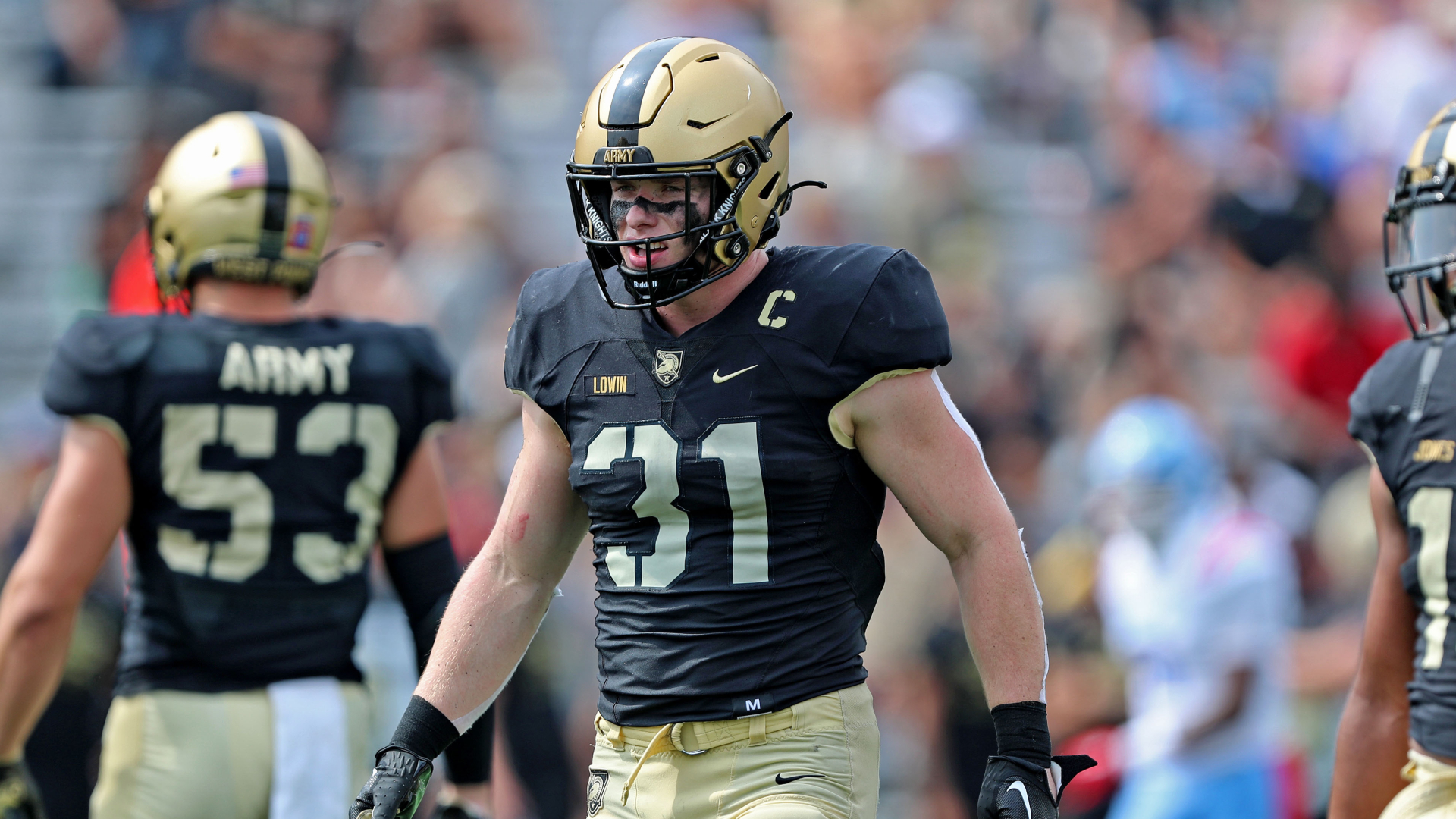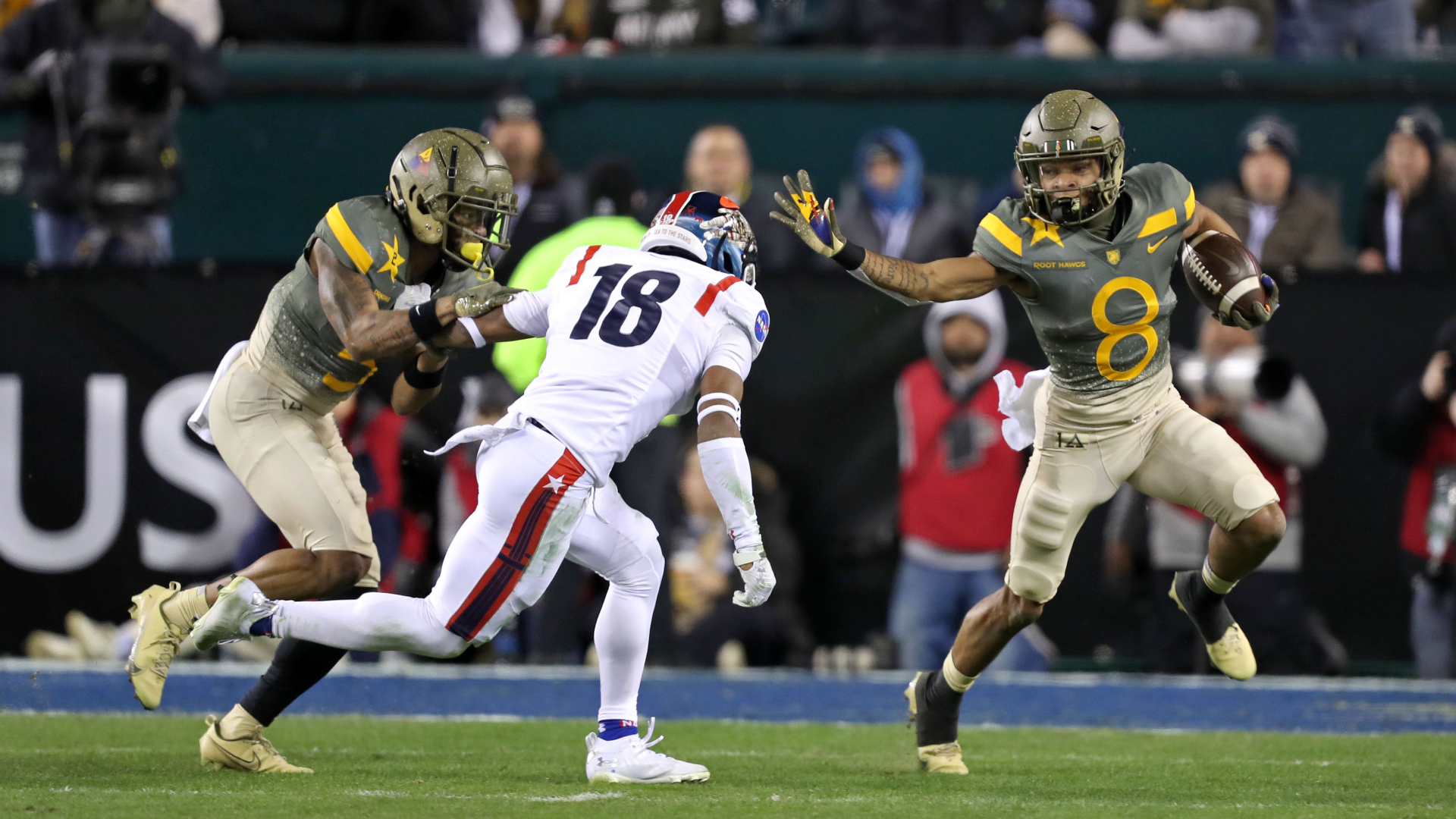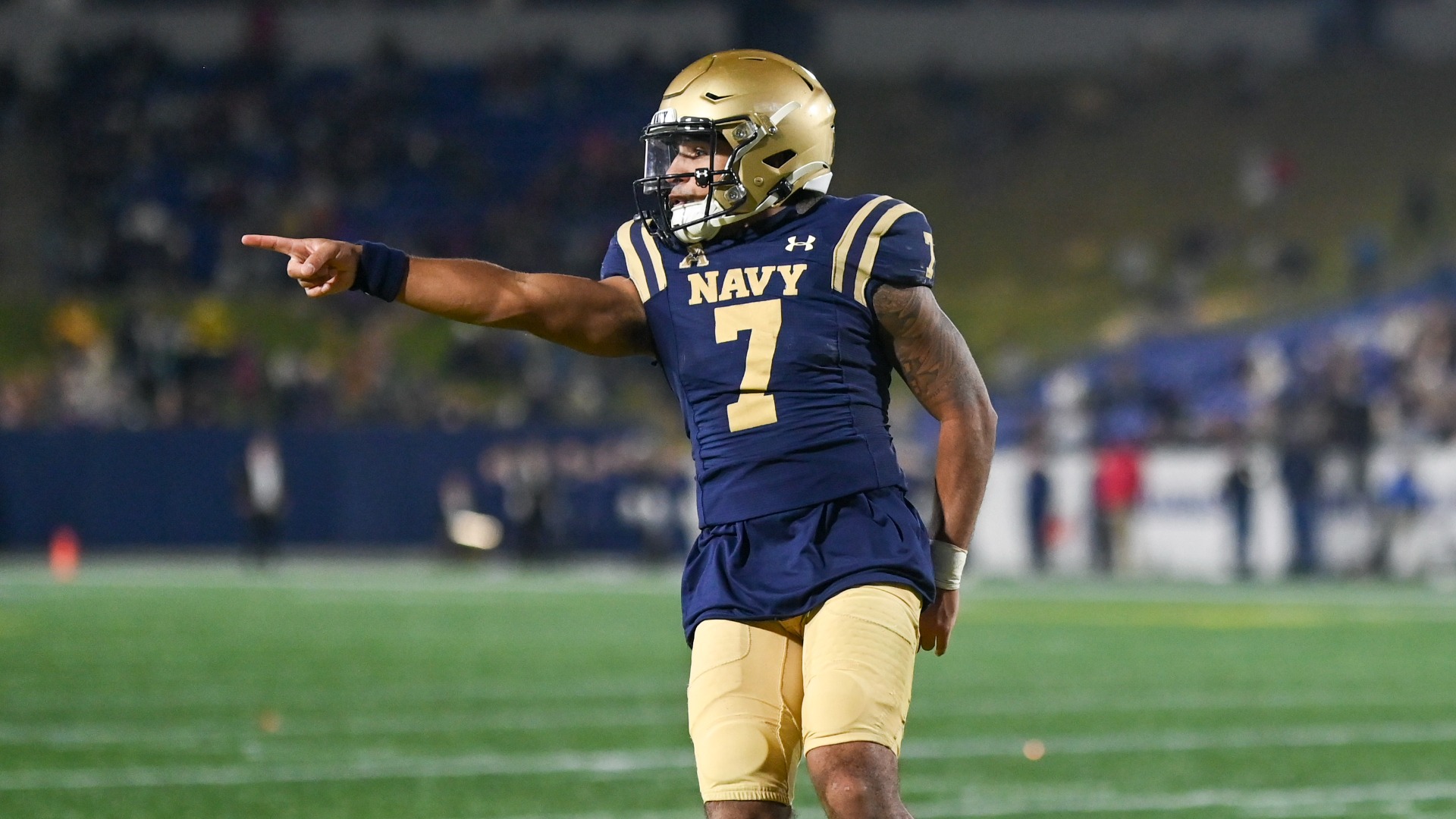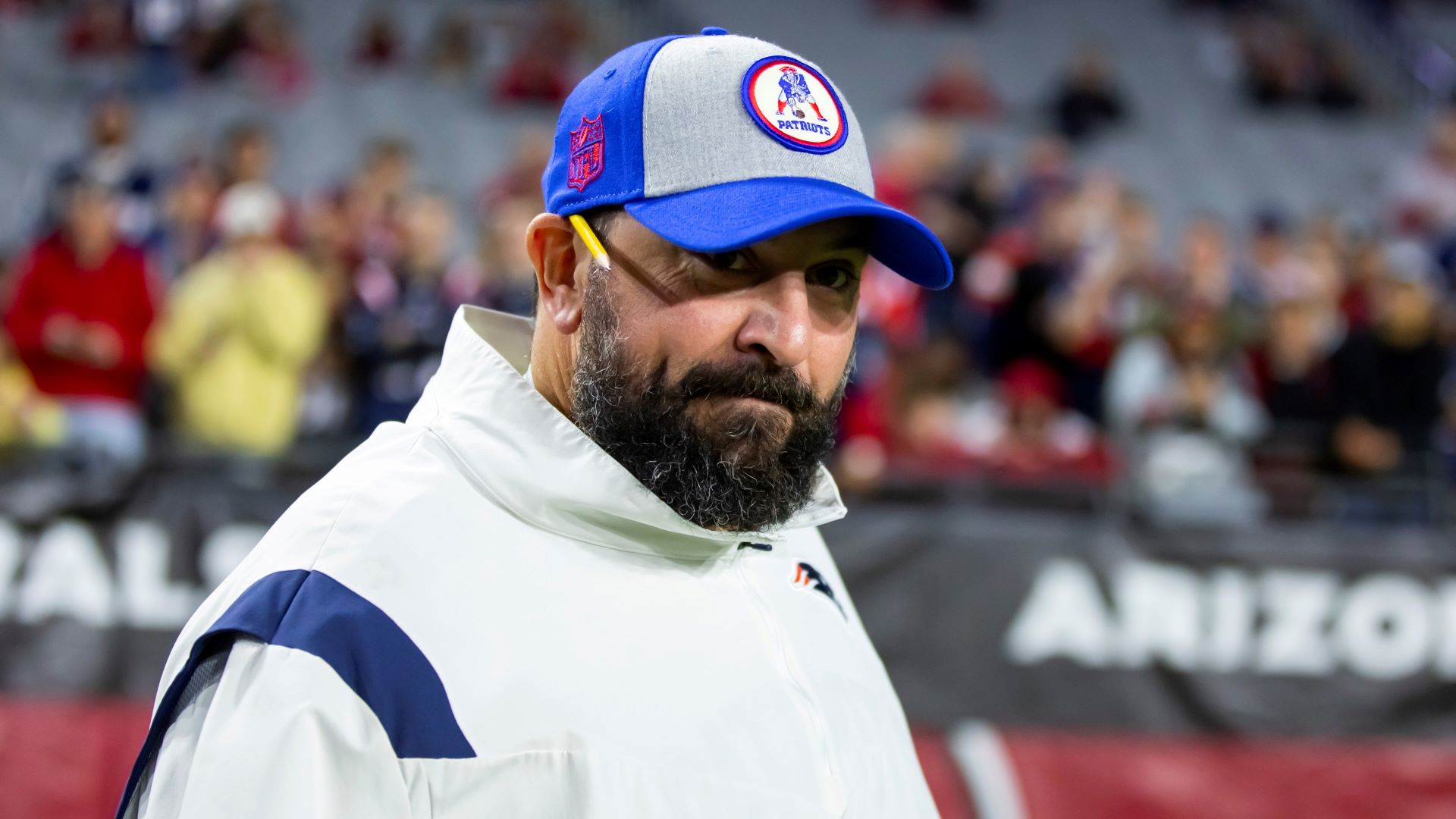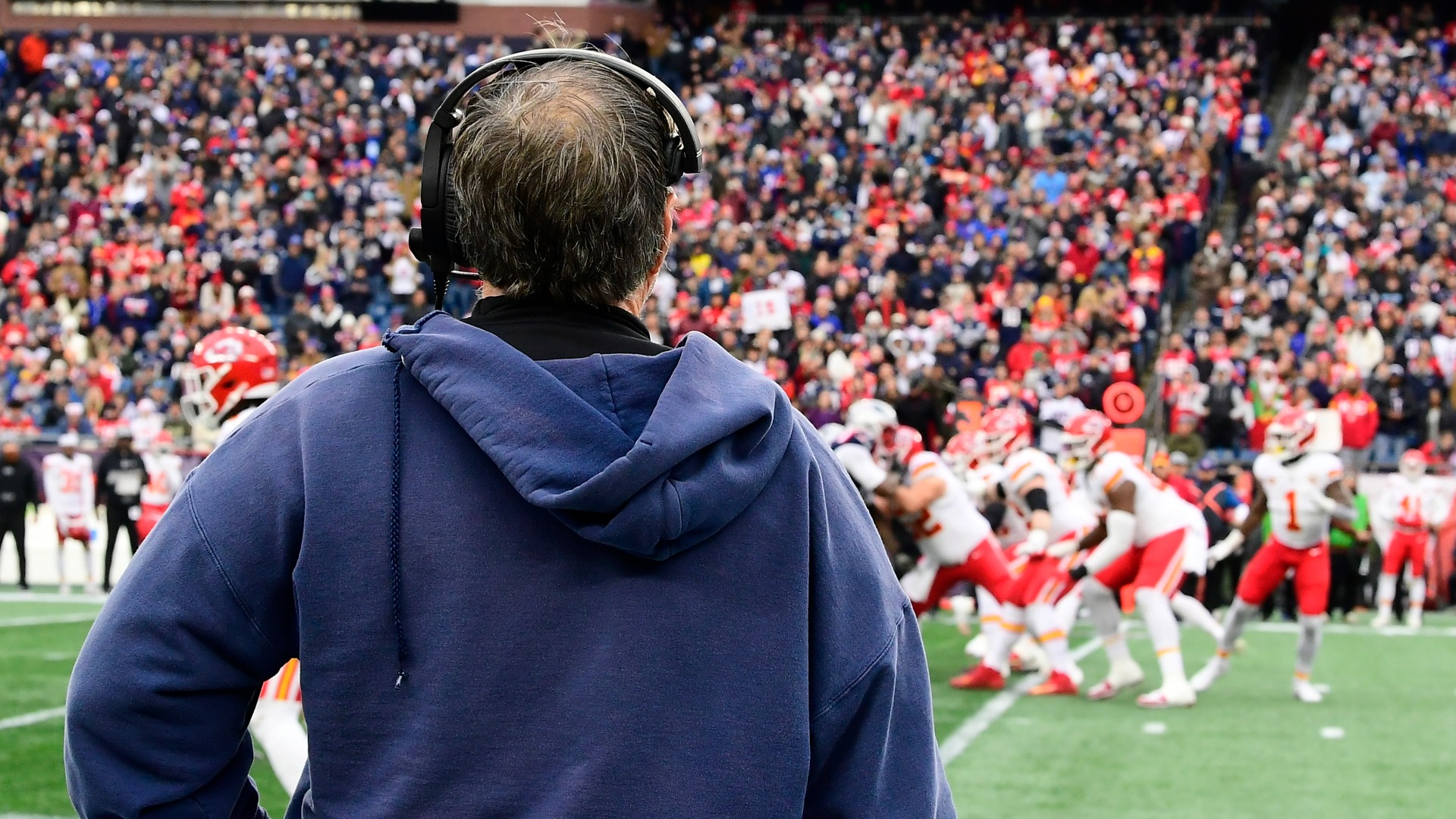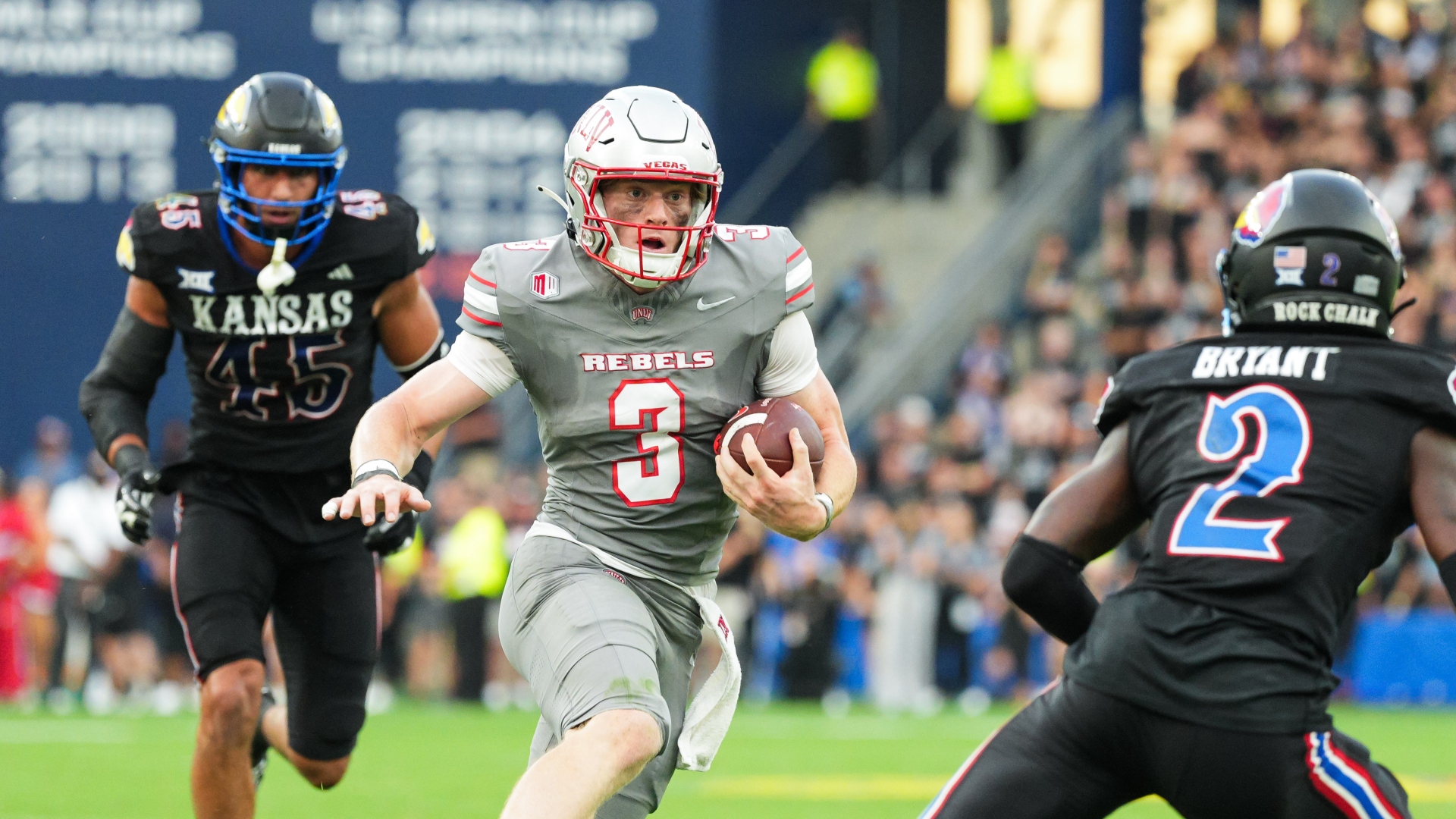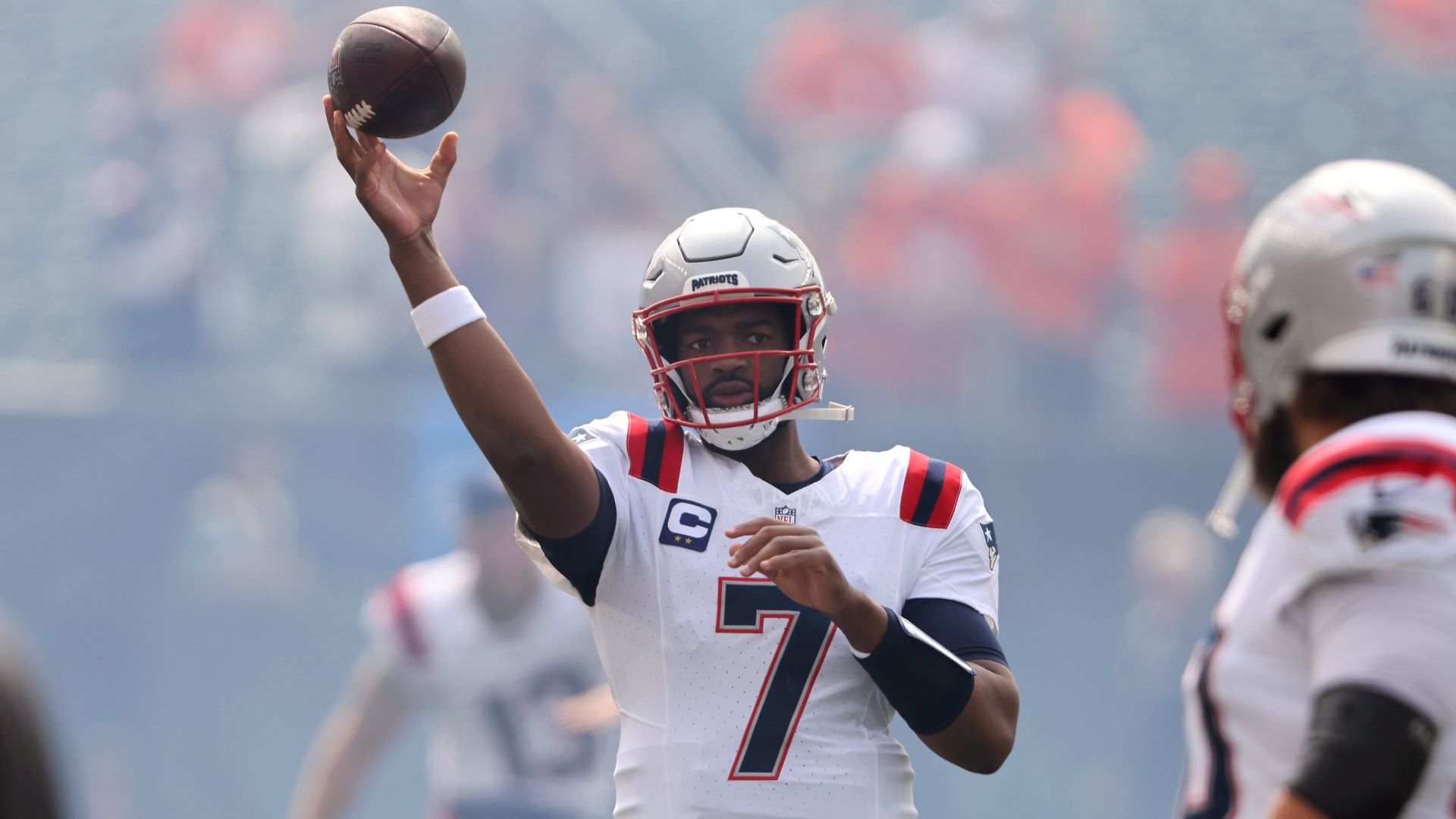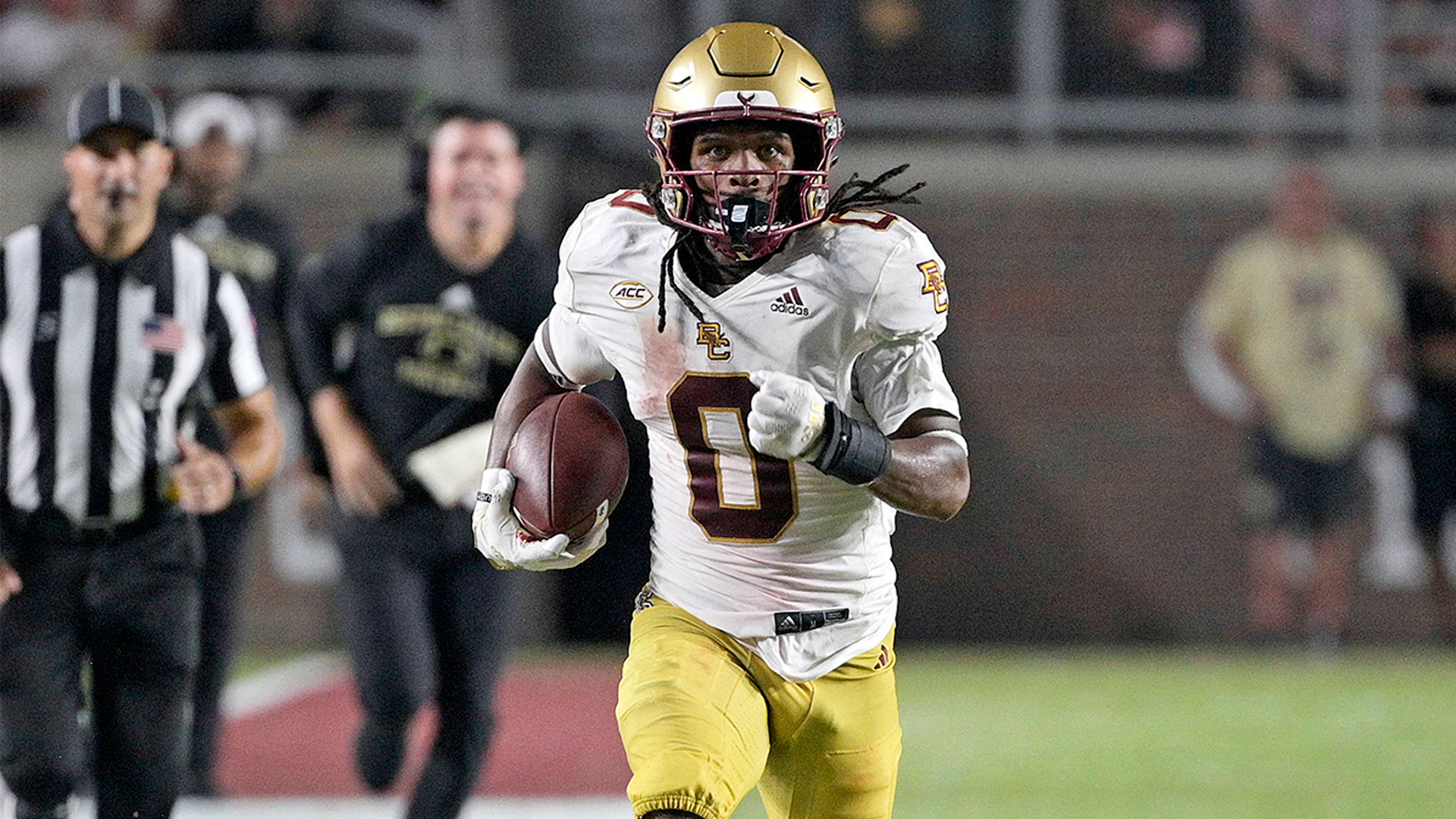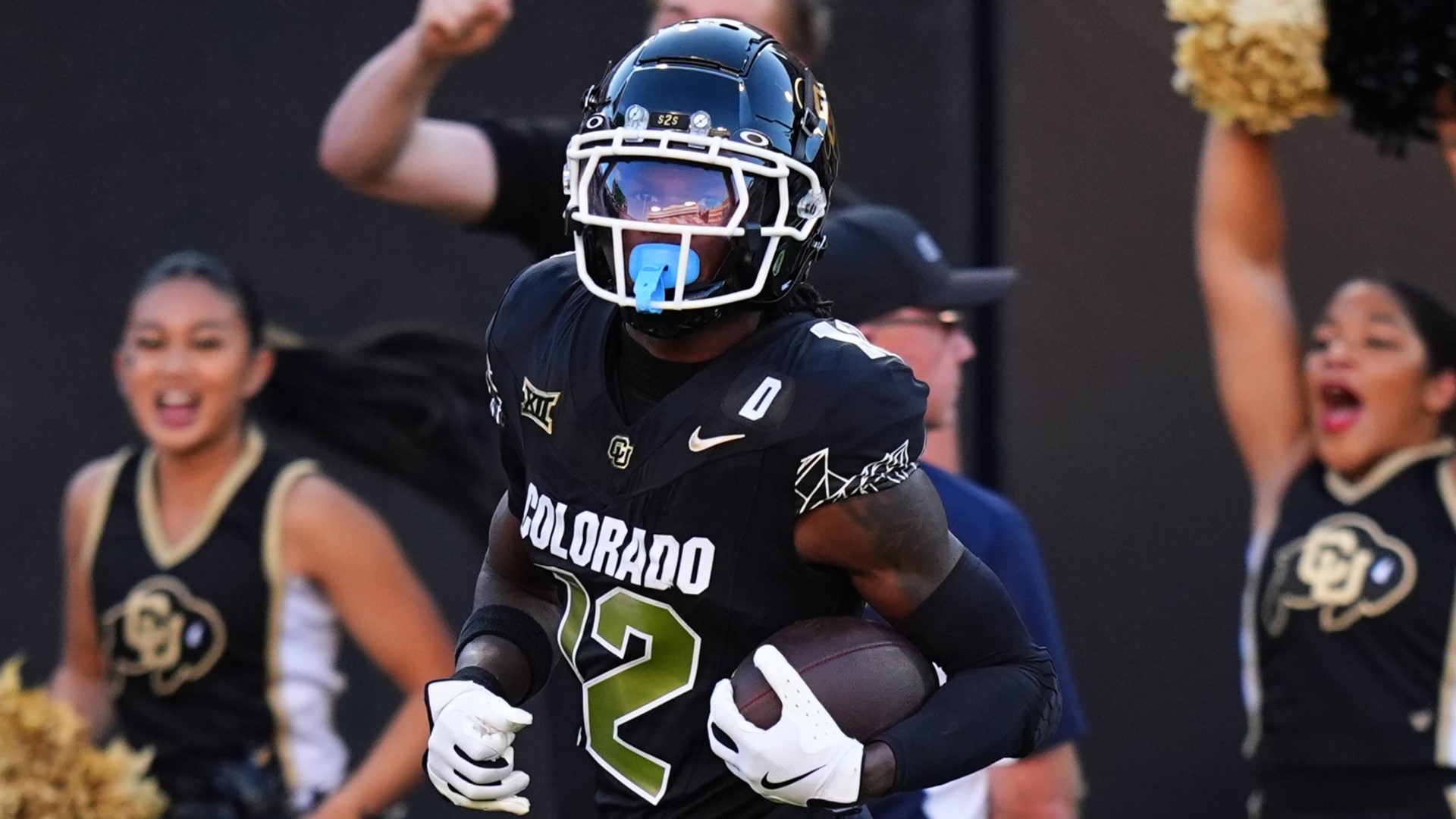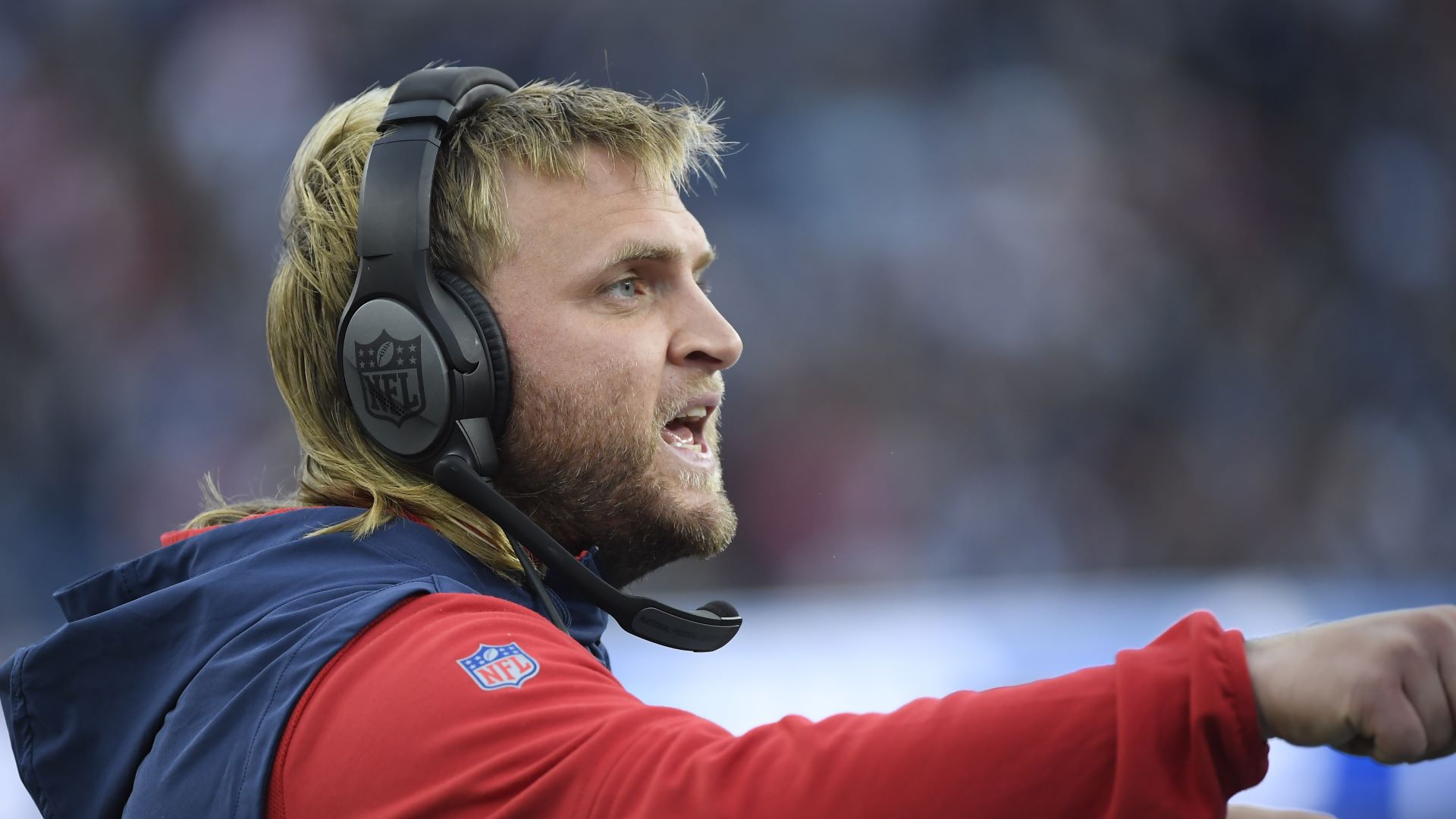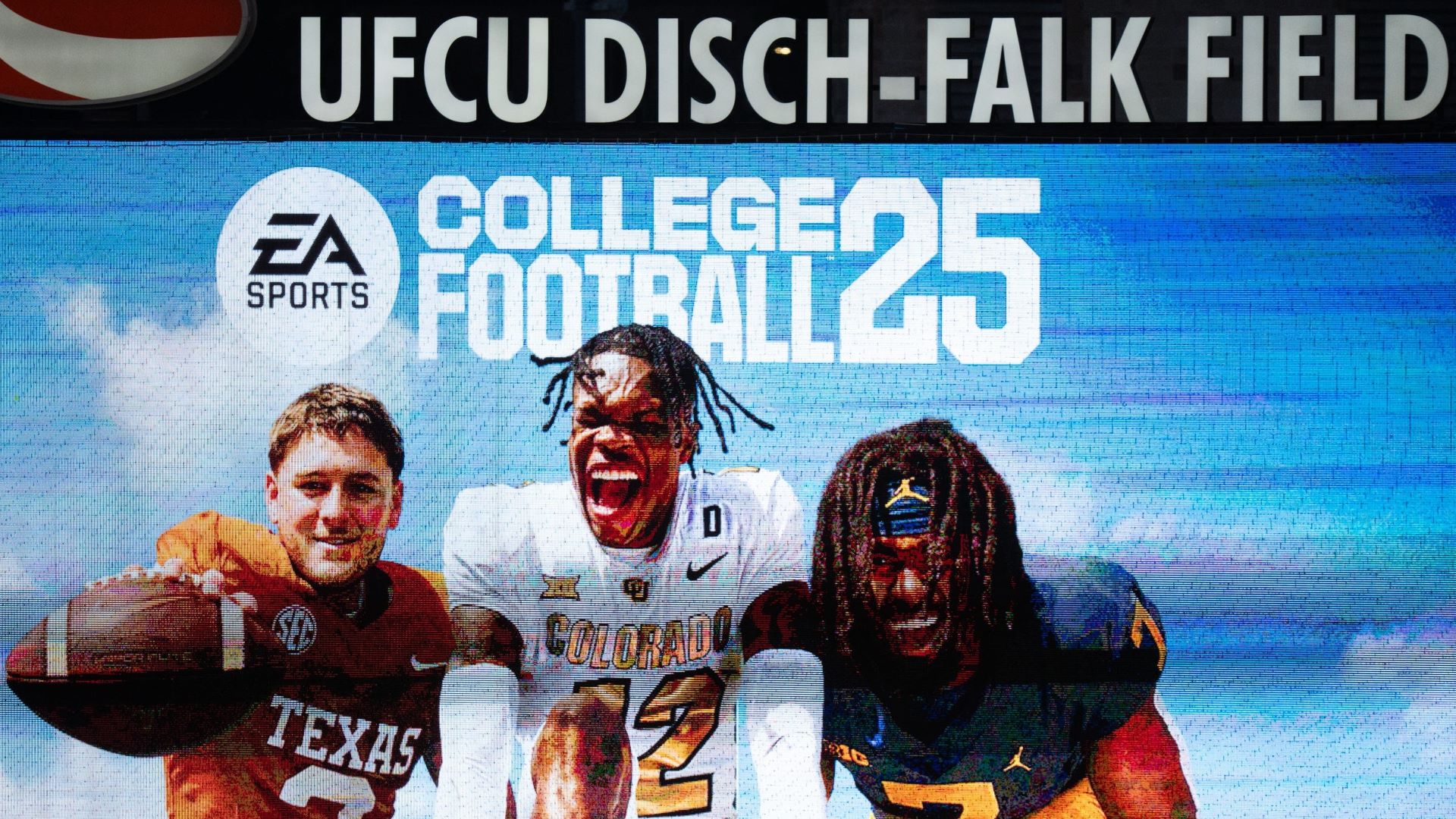The Army-Navy Game will be played in New England and at Gillette Stadium for the first time on Dec. 9, marking the start of a new chapter in the 124-year history of America's Game.
Yes, it's been around that long.
The one-of-a-kind rivalry will see plenty of firsts in 2023, as Foxboro, Mass. will become just the third place outside of the mid-Atlantic region (Chicago in 1926 and Pasadena, Calif. in 1983) to host the game. The folks from ESPN's "College GameDay" will be in attendance, marking their first visit to Gillette Stadium, while the Commander-in-Chief's trophy also will be on the line during this year's game, with Army capturing the trophy outright with a victory and Navy earning a share of the trophy with a win.
This thing is a pretty big deal, and that's due to the unmatched history behind it. We know you might not be too familiar with it, though, so we decided to take a stroll down memory lane for you ahead of Dec. 9.
Story continues below advertisement
The Early Years (1890-1930)
The first matchup between Army and Navy took place on November 29, 1890, as Army cadet Dennis Mahan Michie (for which the Black Knight's stadium is named) accepted a "challenge" from the Naval Academy to play a friendly game of football. Navy had a team, but Michie had to cobble one together for what would eventually become a 24-0 loss.
The folks at West Point weren't satisfied and came back the next year to grab a victory of their own and truly kickstart the rivalry. There would be 31 total games played from 1890-1930, with a notable event (World War I) pausing things for a time. It was following their final canceled game (1929) that things got serious on both ends.
More Army-Navy
National Dominance (1931-1970)
It might be hard to believe, but at one time Army and Navy were viewed as two of the best teams in the country. In this 40-season stretch, it could be counted on that the Black Knights and Midshipmen would be ranked near or at the top of the AP Polls, with Navy making appearances in the Cotton Bowl, Sugar Bowl and Orange Bowl. Army didn't do much bowling, but added two National Championships to their trophy case in 1944 and 1945. The academies saw all five of their total Heisman Trophy winners play during this stretch, with Army capturing three (Doc Blanchard in 1945, Glenn Davis in 1946, Pete Dawkins in 1958) and Navy grabbing two of their own (Joe Bellino in 1960 and Roger Staubach in 1963).
Story continues below advertisement
It was the best of times for the two programs.
Going On Runs (1971-2016)
Army and Navy started to slip in the 1970s but that's when the rivalry picked up. In this stretch, Navy went 29-15-1 in back-and-forth stretches. The Midshipmen won 9-of-11 from 1973-1983 and then took home a record 14 straight from 2002-2015.
The Black Knights broke things up by winning 11-of-15 from 1984-1998, though.
Story continues below advertisement
The New Era (2017-Present)
There was a point in time when Army and Navy stunk. Let's call it like it is.
We've entered a bit of a resurgence period, however. Army has won five of the last seven matchups, but Navy's win in 2019 came when they were ranked. Things have slipped for the Mids lately, with longtime coach Ken Niumatalolo being fired last season and replaced with Brian Newberry. It's a transition period, with Army starting to seize control under Jeff Monken.
This is also the period in which Army and Navy started upping their game with special uniforms, which is really what gets the people going.
Story continues below advertisement
The Black Knights and Midshipmen will kick things off from Gillette Stadium at 3 p.m. ET on Dec. 9. You can watch the game on CBS.
Featured image via Vincent Carchietta/USA TODAY Sports Images
